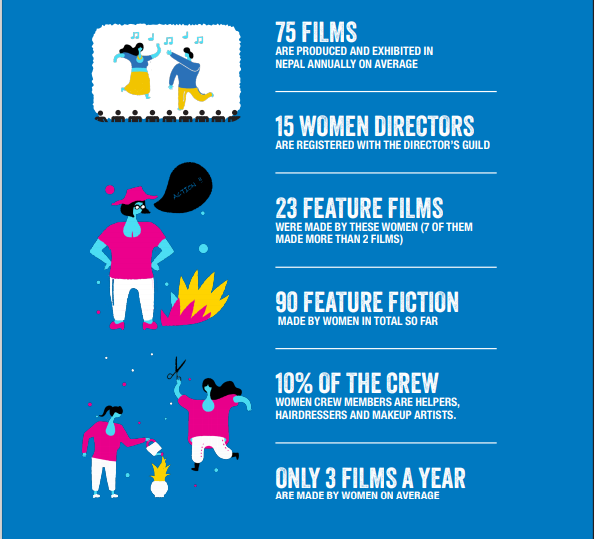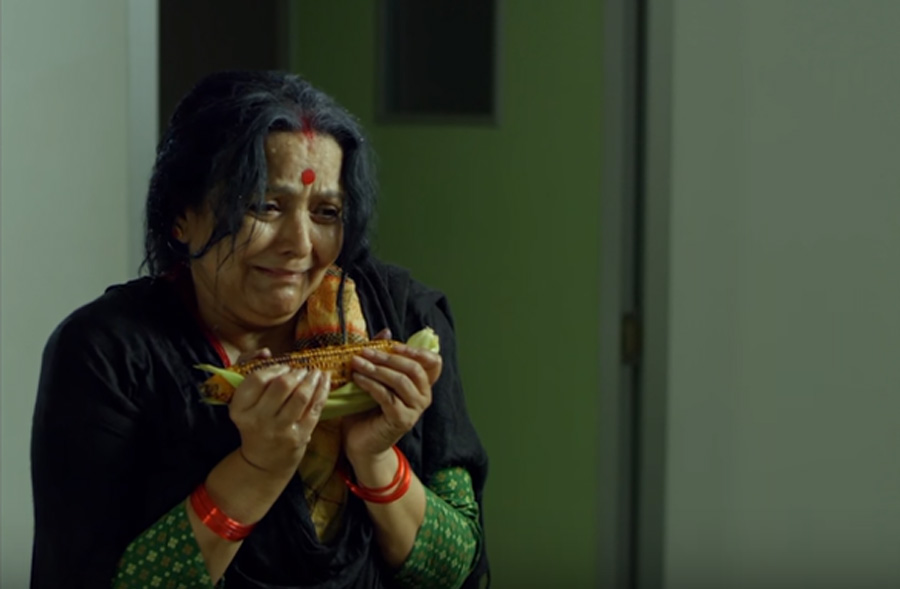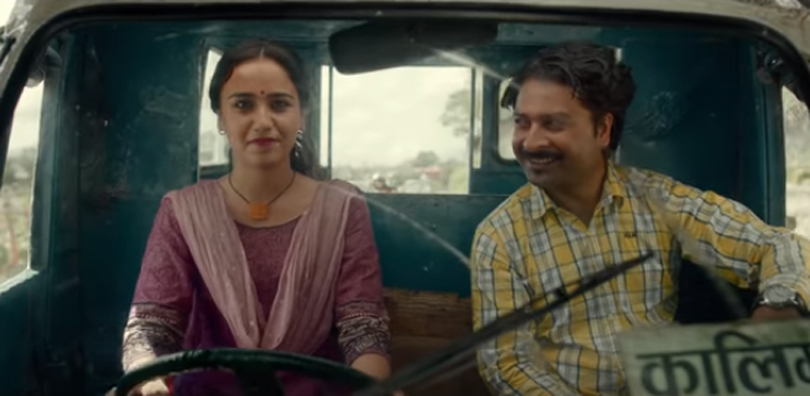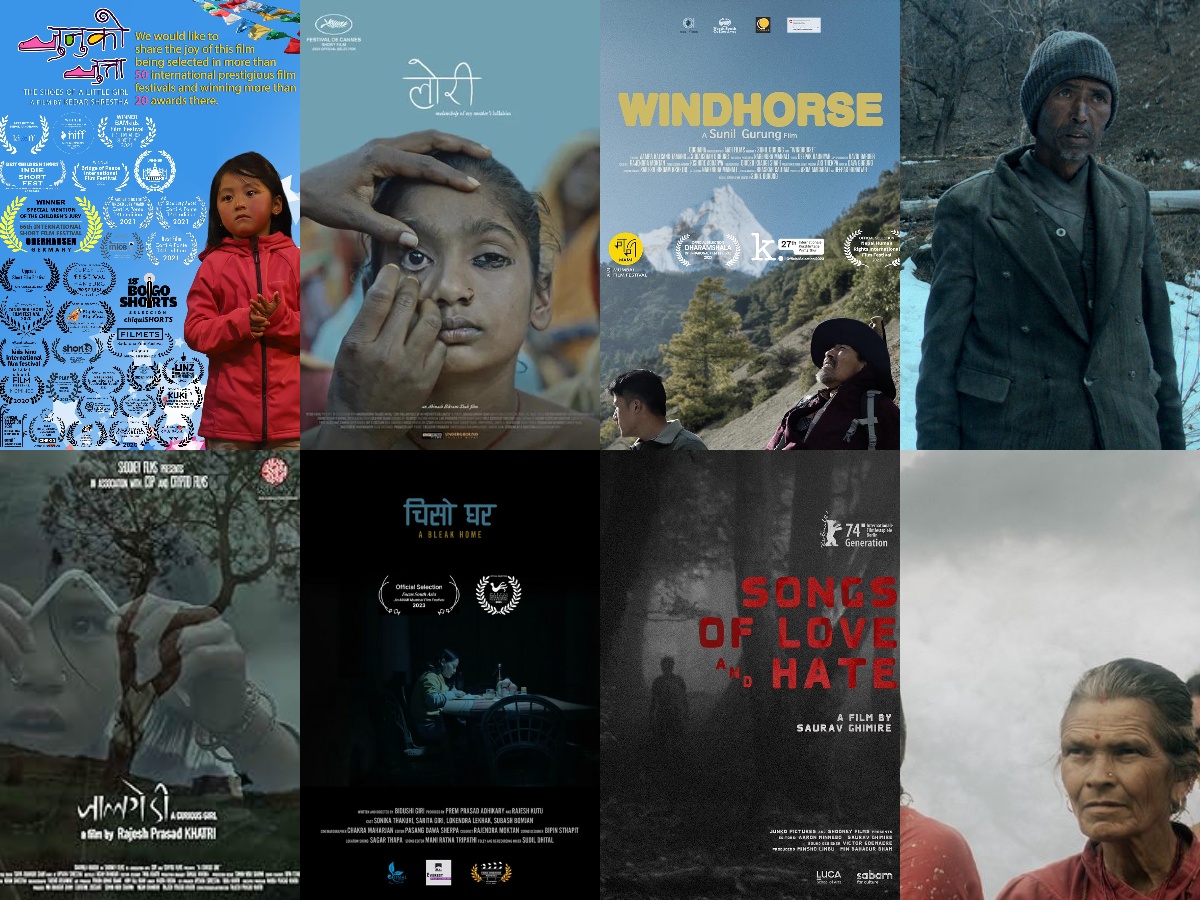Watching Chhakka Panja with her family at a multiplex in Kathmandu, Priya was irked. The way in which the women in the film were treated disgusted her. They were shown as objects, humiliated, abused and used for the male protagonist’s liking. What shocked her was everyone in the movie hall seemed to enjoy it. People, including members of her family, were enjoying the movie laughing as women were belittled and humiliated.
“It was shocking. The movie was regressive and disturbing. I was so furious that I walked out of the hall because I just couldn’t stand what was going on. Since then I’ve barely watched any Nepali movie because if a movie directed by a female director [Deepashree Niraula] was like that, I can’t imagine what other films are like,” says Priya.
Priya was not the only person who had a problem with the movie. Popular Nepali actress Reecha Sharma in a panel discussion during the third edition of Ekadeshma Film Festival spoke about how a film directed by a female director could be so diminishing on women.
Priya and Sharma are just a few of many women who feel that the portrayal of women in Nepali movies is problematic. Even women living in rural areas admit a woman’s role is usually weak in a movie as they feel it does not represent them in any shape or form. This claim has been made strong by a recent research work conducted by Plan International Nepal and Docskool, in which the researchers have highlighted how representation of women in movies, series and advertisements affects the psyche of young women as they are misrepresented, poorly depicted and sexually objectified.
The research work

The research is a part of the Girls Get Equal campaign launched by Plan International, which aimed to raise awareness about things that affect young women. Through the campaign, the organisation also wanted the girls to look at all issues through a feminist lens and question things that they find problematic.
“We undertook this research to shed light on an issue that has not been talked about as much as it should,” says Shreejana Bajracharya, the campaign and communication specialist at Plan International Nepal.
To that, they needed evidence and in a bid to do that, they selected 47 feature films, 15 series and 20 music videos, most of which are currently on YouTube and have a million views.
“We want to create change and to do that, we needed evidence to show the Film Development Board and other stakeholders that they needed to be proactive to ensure that more progressive films were made which dwelled on real-life issues of women because they say that these movies don’t represent them,” says Bajracharya.
In the early stage of the study, they asked five feminists from Kathmandu to review the movies individually and point out what was wrong with the films. They then sat down with people from Docskool and Plan International and discussed why the films were problematic and what they would have done differently.
To make things quantifiable, they also selected moments from films that they found problematic. This includes the number of times women were belittled and scenes when they were looked down upon.
“We wanted to leave no stone unturned,” says writer and director Abhimanyu Dixit, a key researcher for the project. “It’s a known fact that these things happen, but we wanted to have evidence-based research so that people can learn from it and maybe change in the future.”
The researchers also went to remote areas of eastern and western Nepal and showed parts of the films to both boys and girls. While the girls from rural Nepal were not as vocal as those from urban areas, they had a similar point of view about the films.
“Both said similar things. They told us how girls were shown as gullible, weak and easily manipulated. The ones in rural areas also talked about how films differentiated between good and bad girls,” says Dixit.
He says that the girls from rural areas told them how the makers were trying to show a woman wearing ripped jeans as bad while a woman who wore traditional dresses were good. When asked to draw an actress and themselves, most girls, according to the research, drew the actress prettier than themselves as they believed that to be an actress, they had to have a certain beauty standard.

“We are conditioned to see women actors as slim on screen. It seems to be an unquestionable aspect of their representation. It does not matter if they come from urban or rural settings. If anyone’s body is bulky, they are stigmatised as ‘fat people’,” says a girl who took part in the research.
Another interesting aspect the research touched upon was how violence against women was used as a medium to support male character development. According to the report, only four films out of the 47 they reviewed did not have a scene where a woman was sexually abused or harmed. On average, a woman is seen abused, even raped, five times per film.
“If the story demands it, that’s fine. But having a violent scene just for the sake of having one is wrong and will have a negative impact on people,” says Dixit.
Reasons
He says that in defence, many directors say that these are examples that happen in society and that they are just showing the audience the reality. In the case of belittling women, like in the case of Chhakka Panja, the directors even said that at the end of the film, they have shown the women in a better light.

“That’s a very poor explanation,” says Priya. “You belittle her through the movie and say that all is forgiven because you gave her five minutes of limelight. Give us a break.”
Experts argue that this happens mostly because the films are written, produced and directed by men who argue that their primary audience is men and not women.
“They don’t even support women writers and directors who come up with good scripts. Until female filmmakers are supported fully, nothing is going to change,” says Bajracharya, who says that they are also funding 10 women filmmakers to make movies that shed on social issues like trafficking, and harassment.
Another of the prime reasons for the problem Dixit and others argue is the lack of women writers in the scene. According to the research, only one in 10 writers are women, which, many people claim, is one of the key reasons for the poor representation. Things are even worse when it comes to directors as only one in 17 are women.
“There are maybe 10 female directors who have made two or more films and that is quite disheartening,” says Dixit.
Shanta Nepali, a filmmaker and an adventurer, says growing up wanting to be a filmmaker, she had no one to look up to. In conversation with Plan International, she said unlike her, many women might have quit filmmaking as they have no role models or inspiration.
“They have the passion, but they don’t have the guidance that is needed to succeed in the field,” she says.
Revelations
The study also shed light on how little screen time is given to women. According to the report, male characters are given 18 times more dialogues than women. Women also rarely have dialogues with other women beyond matters involving romance, domestic affairs, or solving petty societal problems.

“They are mostly found to be projected as girlfriends/wives, mothers, or concubines,” says Dixit.
Another shocking revelation the study made was how most women that are cast in movies are under the age of 35.
“Women have to fulfil a mother’s role after a certain age; this is a gift given to them by the nature, the gift of motherhood. Whenever our writers write about women above the age of 35, they portray them as mothers, not as a lead character but as the one who supports the lead’s story. You rarely see a female actor above 35 as a lead,” a prominent women actor is quoted on the report.
Despite discourses being held about this, there has yet to be a substantial change as a few actors even say that they feel scared to act in a certain director’s movie given various incidents of sexual harassment. Dixit says that he has heard female actors feel awkward when travelling with the crew away from Kathmandu.
“They don’t feel as safe as they should and that is quite problematic. They say they find it uncomfortable to go change their costumes when shooting in outdoor locations because there are instances where the female character is the only woman on set,” says Dixit.
When it comes to representation of the LGBTIQ+, it is even worse as characters are written without proper research as they are mostly based on stereotypes and stigma.
Road to reform
Docskool also conducted a desk study on the situation of Nepali Cinema in 2014. The study suggested that one woman to nine men participate in film productions. That along with this research further justifies that women’s participation in Nepal’s cinema has been consistently low. Only 12 per cent of the total registered film workforce in Nepal are women, given gendered roles of hairdressers, makeup artists, costume designers. Over the past decade, only 23 films out of 810 had women in a lead role.

What is disheartening is that four of Nepal’s main film associations say they have no mechanism dedicated to supporting/encouraging women in cinema. Even at the policy level, not much support has been given to women even though there have been promises to support female filmmakers.
These discourses are good for the industry, but it is going to take a while before things are better, say various personalities associated with the industry. That is why the research has also given a few recommendations that might change the scenario in Nepal
Dixit says that because he knows that people in the industry were not going to change anytime soon as many directors and producers feel that there is nothing wrong with their films.
“It’s simple; they have a formula and they want to stick to it,” he says. “They go by the motto; if it ain’t broke, don’t fix it.”
“It’s going to take time for things to change. Discourses are good, but it’s only limited to talks. People need to start to show that they really do care,” says Dixit.

























